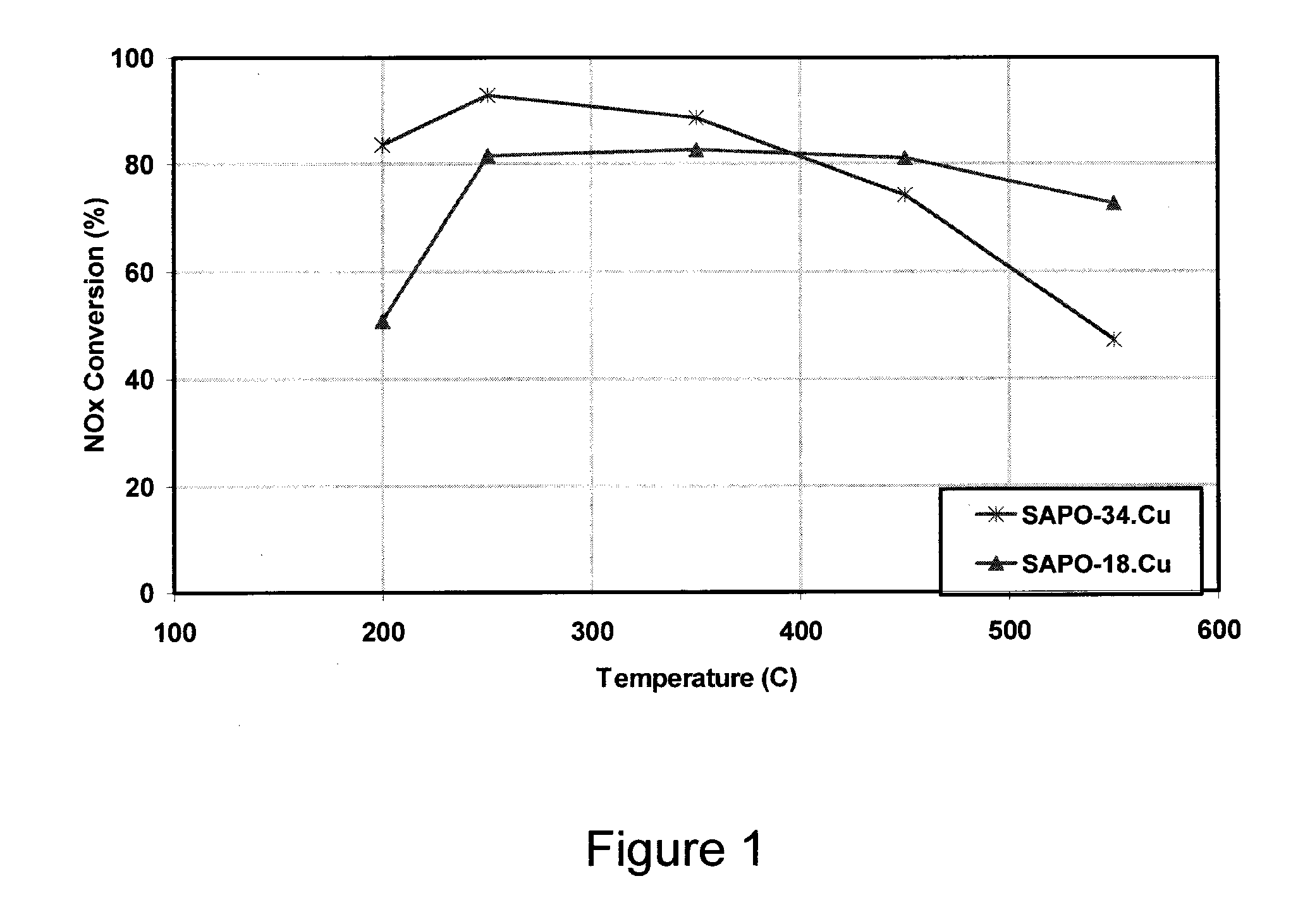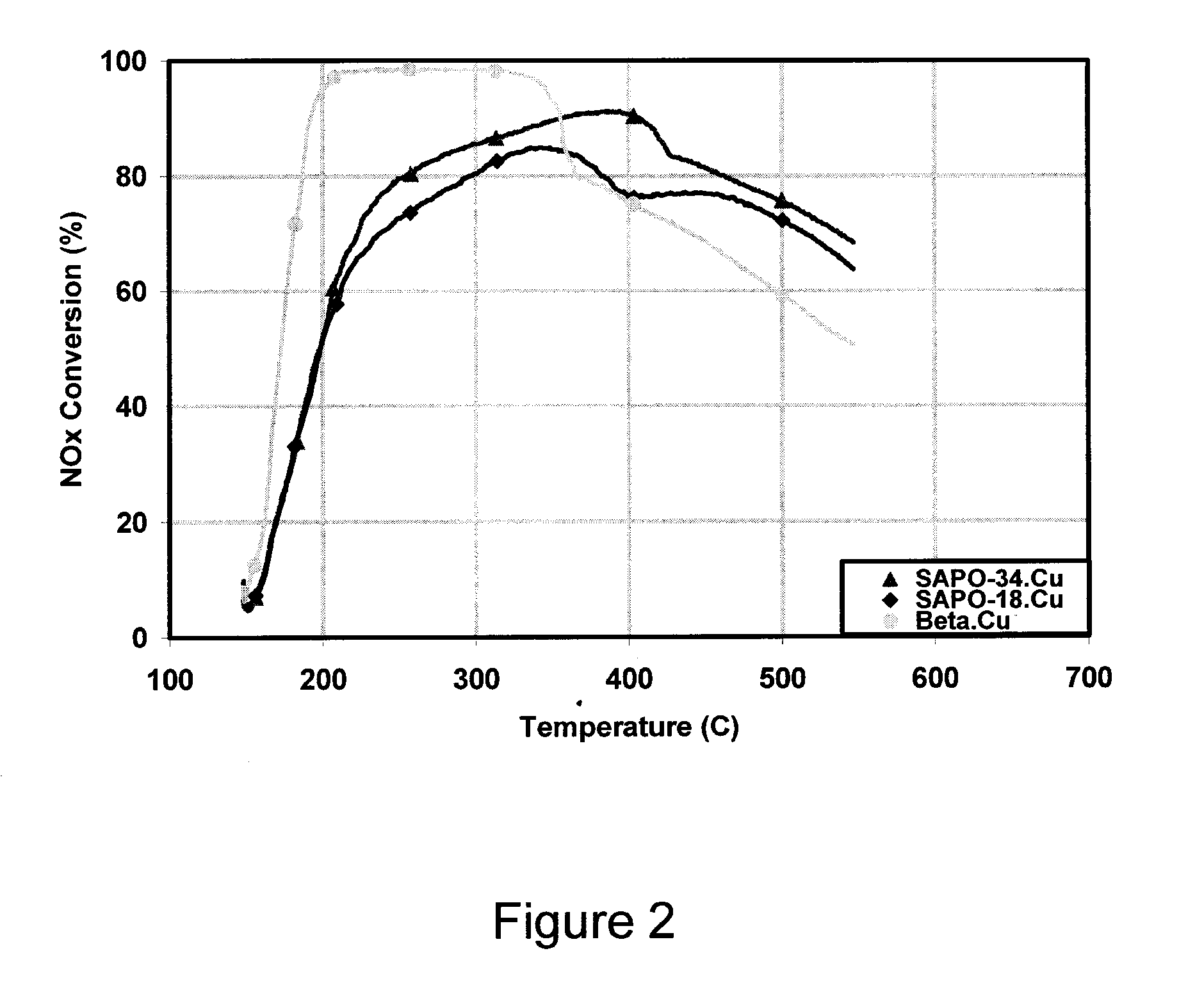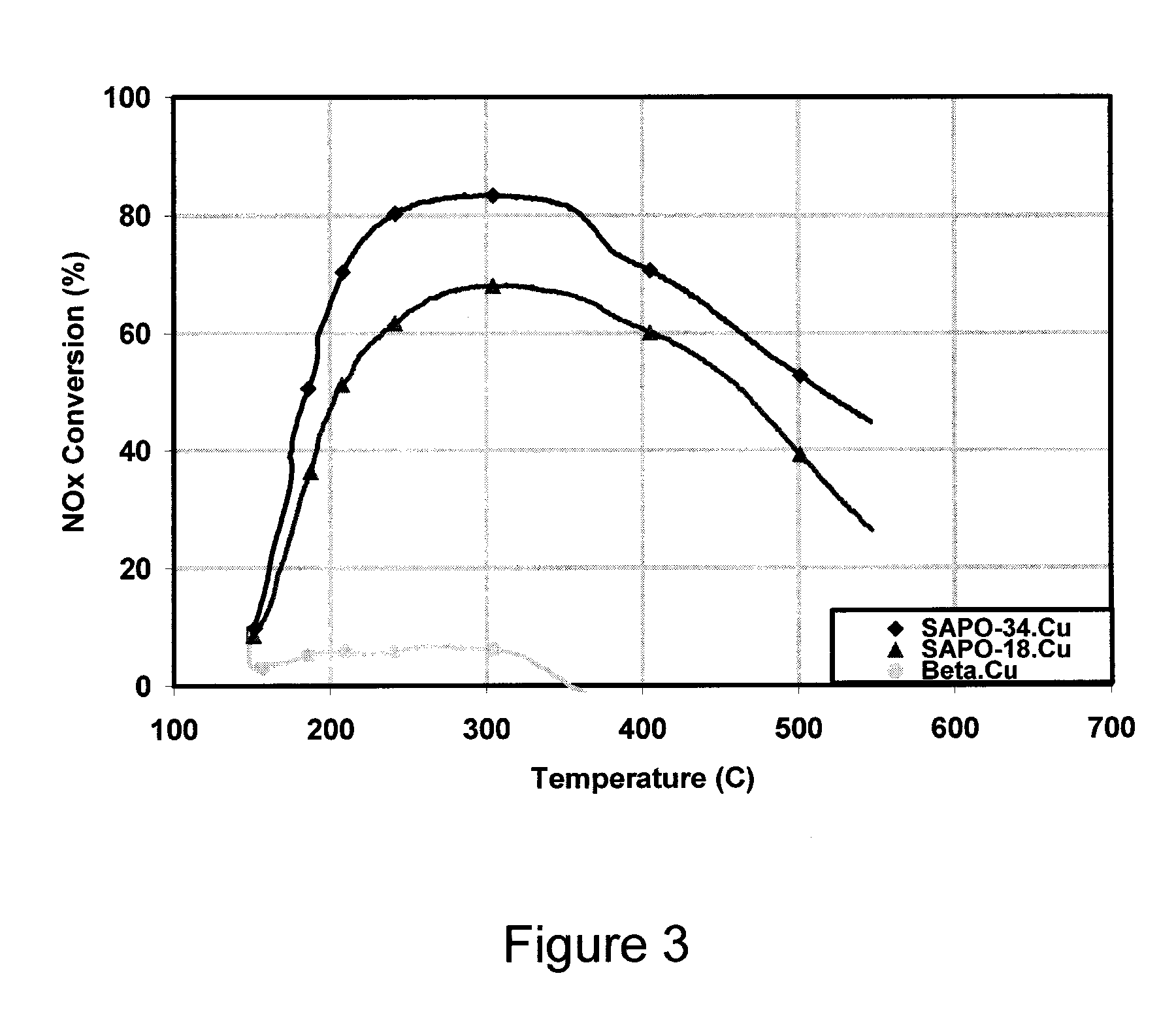DISORDERED MOLECULAR SIEVE SUPPORTS FOR THE SELECTIVE CATALYTIC REDUCTION OF NOx
a technology of molecular sieve supports and catalytic reduction, which is applied in the direction of physical/chemical process catalysts, arsenic compounds, separation processes, etc., can solve the problems of secondary emissions of non-selective reactions with oxygen or unproductive consumption of ammonia, and achieve good thermal and hydrothermal stability and improve the effect of nh3—scr activity
- Summary
- Abstract
- Description
- Claims
- Application Information
AI Technical Summary
Benefits of technology
Problems solved by technology
Method used
Image
Examples
example 1
Preparation of Copper-Loaded AEI / CHA Intergrowth Molecular Sieves
[0073]A sample of a molecular sieve material was obtained and tested to determine its structure and composition. For the sample, an X-ray Diffraction (XRD) pattern was collected on a PANalytical X'Pert PRO MPD (Multi-Purpose Diffractometer), using a copper Kα radiation. The diffraction pattern was collected using programmable divergence and receiving slit maintaining a constant sample illuminated area of 10 mm and the x-rays were measured using a Real Time Multiple Strip (RTMS) detector. DIFFaX analysis was used to determine the AEI / CHA intergrowth ratio. DIFFaX is a program used to simulated powder diffraction data. The program is available from the International Zeolite Association or from the authors Michael M. J. Treacy and Michael W. Dean. The version used to generate the simulations was DIFFaX 1.813. The input file used to generate the simulation was the same as detailed in the document WO 02 / 070407. The simulati...
example 2
NOx Performance of Copper-Loaded AEI / CHA Intergrowth Molecular Sieves
[0077]The copper-loaded 10:90 AEI / CHA intergrowth sample was hydrothermally aged for 72 hours at 700° C. The aged material was then applied as a washcoat to a monolith honeycomb core and tested using a Synthetic Catalyst Activity Test (SCAT) rig. The testing was performed under simulated diesel exhaust gas conditions, namely exposing the catalyst to a gas at a space velocity of 50,000 / hour, wherein the gas composition was about 350 ppm NH3 and NO, about 14 weight % O2, about 4.5 weight % H2O, and about 5 weight % CO2 in N2. The test temperature ranged from 200 to 450° C.
[0078]The sample was tested to determine its capacity for NO conversion (e.g. into N2 and O2) as a function of temperature. The results are shown in FIG. 9.
[0079]For comparison, a sample having only a CHA framework was also tested. The comparative sample was loaded with a similar amount of copper, underwent similar hydrothermal aging, and was tested...
PUM
| Property | Measurement | Unit |
|---|---|---|
| temperature | aaaaa | aaaaa |
| temperature | aaaaa | aaaaa |
| 2θ | aaaaa | aaaaa |
Abstract
Description
Claims
Application Information
 Login to View More
Login to View More - R&D
- Intellectual Property
- Life Sciences
- Materials
- Tech Scout
- Unparalleled Data Quality
- Higher Quality Content
- 60% Fewer Hallucinations
Browse by: Latest US Patents, China's latest patents, Technical Efficacy Thesaurus, Application Domain, Technology Topic, Popular Technical Reports.
© 2025 PatSnap. All rights reserved.Legal|Privacy policy|Modern Slavery Act Transparency Statement|Sitemap|About US| Contact US: help@patsnap.com



